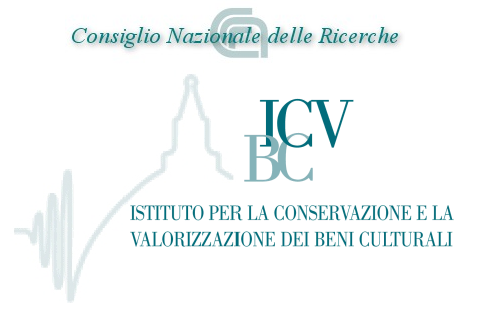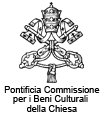CNR Firenze-ICVBC Istituto per la Conservazione e la Valorizzazione dei Beni Culturali
 Director: Dott. Piero Frediani Director: Dott. Piero Frediani
HISTORY AND ORIGIN
Founded in July 2001, the Istituto per la Conservazione e la Valorizzazione dei Beni Culturali (Institute for the Conservation and Enhancement of Cultural Heritage) originated from the merging of three CNR Study Centres for Works of Art, which had already been established in 1971.
Since the majority of its existing research staff belonged to the ex-Centres, located in Milan (ex-‘Gino Bozza’ Centre directed by Giovanna Alessandrini), Florence (ex-Centre directed by Franco Piacenti) and Rome (ex-‘Marcello Paribeni’ Centre directed by Gino Moncada Lo Giudice), the current profile of the institute could not but reflect the working traditions and disciplines of these former Centres.
The latter were primarily interested in the conservation of outdoor heritage, above all of an architectonic (Florence, Milan) and archaeological (Rome) nature, confronting the issues that arose from a scientific standpoint and proposing and experimenting technological solutions.
The principal activity was that of researching and testing new products for conservation of stone artefacts (Florence, Milan), conducting diagnostic studies on the state of conservation of monuments (Milan), and carrying out research relating to archaeological excavations (Rome), as well as studies of the environment and environmental control (Rome).
The ex-Study Centres have today become the Head Office of the institute (Florence), and the Rome and Milan Units.
PROFILE
The ICVBC is established with its own distinctive profile within the panorama of Italian organizations operating in the field of cultural heritage and belonging either to the CNR or the Ministry for Cultural Heritage and Activities. This was important in order to avoid the possibility of unproductive duplications or overlaps and to pursue an activity that, from the very start, would integrate with those of other institutional bodies in the sector.
Three CNR institutes operate within the cultural heritage sector. In order of their creation, we must cite the ITABC (Istituto Tecnologie Applicate ai Beni Culturali/ Institute of Applied Technologies for Cultural Heritage), in operation since 1998, directed by Salvatore Garaffo with headquarters in Rome, the ICVBC (Istituto per la Conservazione e la Valorizzazione de Beni Culturali/Institute for the Conservation and Enhancement of Cultural Heritage), in operation since 2001, at the moment directed by Piero Frediani with headquarters in Florence and two separate units in Milan and Rome, and the IBAM (Istituto per i Beni Archeologici e Monumentali/Institute for Archaeological and Monumental Heritage), in operation since 2003, directed by Francesco D’Andria, with headquarters in Lecce and two separate units in Potenza and Catania.
The ICVBC immediately identified its own line of activity in embracing the aspect of conservation of cultural heritage (though still maintaining its function of promotion) and in confronting research issues primarily involving the scientific and technological aspects of conservation problems, and the synthesis of new products for the protection and the conservation of cultural heritage.
The flagship institutes of the Ministry for Heritage and Cultural Activities, the Istituto Centrale del Restauro in Rome (ICR) and the Opificio delle Pietre Dure in Florence (OPD), have primary institutional aims that are quite distinct from those of the ICVBC, promoting either the execution or the coordination of actual on-site conservation operations. Whenever these institutes are also involved in scientific and technological research, close collaboration with the ICVBC ensures that concerted actions are developed and individual roles are integrated.
Having established the primary activity of the institute (research essentially focused on the study of scientific and technological aspects of conservation), new protocols and instruments have been developped in order to assess the state of conservation of cultural heritage. This activity is performed both directly through its own research staff in all three operating units, and coordinating study groups of other CNR institutes and Italian universities, which share interests within this field and recognize their importance and priorities. The attention is above all concerned with outdoor cultural properties, particularly those consisting of natural and artificial stone materials, as well as metal (bronzes), decorated plasters, glass, etc. Their location within and direct exposure to the aggressive and contaminated environment of urban sites, subjects these types of heritage to the highest risk of decay. Well-defined protocols are needed to monitor the progression of the decay of artefacts and monuments in situ and to evaluate the efficacy of their conservation treatments. What mentioned above responds to the fundamental need of heritage protection bodies (i.e. Superintendences) that, on the basis of data recorded during monitoring campaigns, are able to formulate plans for programmed maintenance.
The development of such a programme would therefore result in close interaction between the CNR research institutes and universities together with cultural heritage protection organizations, as part of a common policy with a strong bias towards preventive conservation.
mail - web |

















